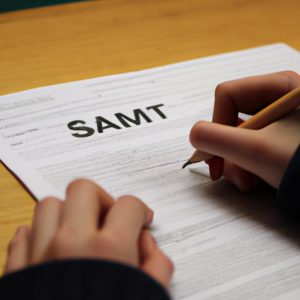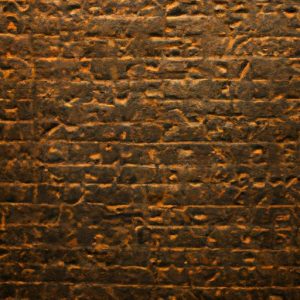Introduction
Writing is a fundamental skill that plays a vital role in children’s academic and personal development. As parents and educators, we understand the significance of fostering strong handwriting abilities in young learners. That’s where the revolutionary program, “Handwriting Without Tears,” comes into play. In this article, we will explore the essence of the program and delve into the intriguing concept of letter order.
Understanding the Importance of Handwriting Skills for Children
Handwriting skills extend beyond the mere ability to put words on paper. They are the building blocks that enable children to express their thoughts, ideas, and creativity with precision and clarity. Proficient handwriting enhances cognitive development, fine motor skills, and overall academic achievement. It is a powerful tool that empowers children to communicate effectively, both in their academic pursuits and everyday life.
The Concept of “Handwriting Without Tears” Program
Developed by occupational therapist Jan Z. Olsen, the “Handwriting Without Tears” program has revolutionized the way children learn to write. This innovative approach adopts a multi-sensory and child-friendly methodology to facilitate the mastery of handwriting skills. By combining visual, auditory, and kinesthetic elements, the program ensures an engaging and effective learning experience for children of all abilities.
Brief Overview of Letter Order in the Program
Central to the “Handwriting Without Tears” program is the concept of letter order. The program follows a meticulously designed sequence, carefully crafted to optimize the learning process and promote writing fluency. Each letter is introduced in a specific order, gradually transitioning from simple to complex formations. This strategic arrangement allows children to build a solid foundation, progressively advancing their skills while minimizing frustration.
In the following sections, we will explore the Handwriting Without Tears program in detail, unravel the significance of letter order, and provide practical guidance on implementing this approach to enhance children’s handwriting skills. So, let’s embark on this exciting journey of transforming handwriting struggles into joyful accomplishments!
The Handwriting Without Tears Program
Background and History of the Program
The Handwriting Without Tears program has a rich history rooted in the expertise and passion of occupational therapist Jan Z. Olsen. With over 40 years of experience, Olsen recognized the need for an innovative and inclusive approach to handwriting instruction. The program was initially developed to address the challenges faced by children with learning differences, ensuring that every child has the opportunity to master this essential skill.
Key Principles and Methodologies Used in the Program
The Handwriting Without Tears program is built upon a set of core principles designed to maximize learning and engagement. Firstly, it emphasizes a multi-sensory approach, integrating visual, auditory, and kinesthetic elements. By encompassing various senses, children can fully immerse themselves in the learning process, making connections and reinforcing their understanding of letter formation.
Another key principle is the program’s focus on teaching letters in groups based on their formation similarities. This approach allows children to grasp patterns and transfer their knowledge from one letter to another, fostering a deeper understanding of handwriting concepts. Additionally, the program incorporates playful activities and interactive tools, making the learning experience enjoyable while maintaining a structured and systematic approach.
Benefits of Using Handwriting Without Tears for Children’s Handwriting Development
The Handwriting Without Tears program offers numerous benefits for children’s handwriting development. Firstly, it promotes proper letter formation, ensuring that children develop consistent and legible handwriting habits from the start. This foundation serves as a solid base for future writing endeavors, allowing children to express themselves confidently and effectively.
Moreover, the program’s multi-sensory approach caters to diverse learning styles, accommodating children with various strengths and needs. By engaging multiple senses, the program enhances memory retention and reinforces letter recognition, enabling children to internalize the skills necessary for efficient handwriting.
Furthermore, Handwriting Without Tears fosters a positive and joyful learning environment. By incorporating fun activities and interactive tools, children develop a love for writing, transforming what may have been perceived as a daunting task into an enjoyable and empowering experience.
In the next sections, we will explore the significance of letter order in the Handwriting Without Tears program, breaking down the specific progression from simple to complex letters. Let’s dive deeper into this intriguing aspect and unravel the secrets behind effective handwriting instruction.
The Significance of Letter Order
Explanation of the Rationale Behind the Specific Letter Order in Handwriting Without Tears
In Handwriting Without Tears, the specific letter order is not arbitrary; rather, it is a meticulously planned sequence that follows a logical progression. The program introduces letters based on their similarity in formation and movement patterns. By grouping letters with similar strokes together, children can grasp fundamental concepts more easily, leading to a smoother learning experience.
How the Letter Order Supports Children’s Learning and Mastery of Handwriting
The carefully structured letter order in Handwriting Without Tears serves as a scaffold for children, laying a solid foundation for their handwriting skills. As they progress through the program, children build upon their existing knowledge, gradually mastering the formation and fluidity of each letter. This incremental approach ensures that children develop a strong grasp of the basics before advancing to more complex letter formations.
Moreover, the letter order in Handwriting Without Tears promotes muscle memory and kinesthetic learning. As children practice writing letters with consistent strokes, their muscle memory strengthens, enabling them to write with greater ease and fluency. This kinesthetic reinforcement is essential in helping children internalize the correct letter formations and develop a natural writing flow.
Research and Evidence Supporting the Effectiveness of the Letter Order
The effectiveness of the letter order in Handwriting Without Tears is backed by extensive research and empirical evidence. Studies have shown that following a structured and consistent letter order enhances children’s ability to learn and retain handwriting skills. By presenting letters in a logical sequence, the program maximizes cognitive connections and facilitates faster skill acquisition.
Research also indicates that a well-designed letter order can reduce confusion and frustration among learners. By introducing letters in a systematic manner, Handwriting Without Tears allows children to build upon their prior knowledge, reinforcing their understanding of letter formations and minimizing cognitive overload.
In conclusion, the significance of letter order in the Handwriting Without Tears program cannot be overstated. The rationale behind the specific sequence, the support it provides to children’s learning and mastery of handwriting, and the research-backed evidence all point to the effectiveness of this approach. By following the carefully crafted letter order, children can embark on a journey towards proficient and confident handwriting skills.
Letter Order in Handwriting Without Tears
Detailed Breakdown of the Letter Order
In the “Handwriting Without Tears” program, letter order is meticulously designed to optimize learning outcomes. Let’s delve into the breakdown of this letter order and understand its significance in fostering children’s writing proficiency.
Step-by-Step Progression from Simple to Complex Letters
The program introduces letters in a carefully structured sequence, gradually progressing from simpler formations to more complex ones. This thoughtful approach ensures that children build a solid foundation before moving on to more challenging letters. By starting with basic strokes and gradually incorporating more intricate shapes, children can develop their handwriting skills in a systematic and confidence-building manner.
Explanation of the Reasoning behind Each Letter’s Placement in the Order
Each letter’s placement within the letter order of Handwriting Without Tears is purposeful and based on sound educational principles. The program considers factors such as letter formation similarities, motor skill development, and the frequency of letter usage in words. By strategically arranging the letters, the program maximizes children’s ability to transfer their skills to real-world writing scenarios.
For example, the program begins with uppercase letters that use only vertical and horizontal lines, such as “L” and “H.” This approach allows children to become familiar with basic strokes and gain control over their pencil movements. As children progress, they encounter lowercase letters that share similar formations to their uppercase counterparts, such as “l” and “h.” This connection bridges the transition between uppercase and lowercase letters, facilitating a smoother learning experience.
Moreover, the letter order follows a logical progression that aligns with the natural development of motor skills. As children gain dexterity and hand control, they are gradually introduced to more complex and challenging letters, such as those involving curves and diagonal lines.
By providing a rationale for each letter’s placement within the letter order, the Handwriting Without Tears program ensures that children experience a seamless and effective learning journey, paving the way for confident and proficient handwriting.
In the next section, we will explore practical strategies for implementing the handwriting without tears letter order, equipping parents and educators with the tools to support children’s development in this essential skill.
Implementing Handwriting Without Tears Letter Order
Strategies for Effective Implementation of Letter Order
When it comes to implementing the Handwriting Without Tears letter order, both parents and educators play a crucial role in supporting children’s learning and progress. Here are some strategies to ensure a smooth and successful implementation:
-
Consistency is Key: Establish a consistent practice routine to reinforce letter order. Set aside dedicated time each day for handwriting exercises, creating a structured and predictable learning environment.
-
Break it Down: Break down the letter order into manageable chunks. Focus on one or a few letters at a time, allowing children to grasp the formation and movement before moving on to the next set. This approach builds confidence and prevents overwhelm.
-
Multisensory Engagement: Incorporate multisensory activities to engage children in the learning process. Utilize tactile materials like sand, playdough, or textured surfaces to reinforce letter formation. Encourage verbalization of letter strokes and provide auditory cues for kinesthetic learners.
Creating a Conducive Learning Environment
To optimize the implementation of Handwriting Without Tears letter order, it is essential to create an environment that nurtures children’s learning and motivates their handwriting practice. Consider the following tips:
-
Comfortable Workspace: Designate a comfortable and well-lit workspace for handwriting practice. Ensure the seating and writing surface are ergonomically suitable for your child’s age and size.
-
Organized Materials: Keep writing utensils, paper, and other necessary materials readily accessible and organized. This helps minimize distractions and enables children to focus on the task at hand.
-
Positive Reinforcement: Encourage and praise your child’s efforts and progress. Celebrate small victories, providing motivation and building a positive association with handwriting practice.
Resources and Materials for Support
Handwriting Without Tears offers a range of resources and materials to support the implementation of their letter order system. Consider utilizing the following tools:
-
Workbooks and Worksheets: Handwriting Without Tears provides a variety of workbooks and worksheets that align with their letter order. These resources offer structured practice opportunities for children to reinforce their letter formation skills.
-
Digital Platforms: Explore the Handwriting Without Tears website and digital platforms for interactive games, activities, and practice exercises. These engaging resources can make the learning process more enjoyable for children.
-
Educator Guides: Educators can access comprehensive guides and lesson plans provided by Handwriting Without Tears. These resources offer valuable insights and strategies for effectively implementing the letter order within the classroom setting.
By implementing these strategies, creating a conducive learning environment, and utilizing the available resources, parents and educators can ensure the successful implementation of the Handwriting Without Tears letter order, setting children on the path to mastering handwriting with confidence and joy.
Success Stories and Testimonials
Realizing the Impact of Handwriting Without Tears Letter Order
The effectiveness of the Handwriting Without Tears program and its carefully planned letter order can be witnessed through the inspiring success stories of children who have embraced this approach. Let’s explore some of these heartwarming testimonials that highlight the positive impact of the program on children’s handwriting skills and overall confidence.
-
“My daughter used to struggle with forming letters and often felt discouraged. But after implementing the Handwriting Without Tears letter order, I witnessed a remarkable transformation. She became more confident and proficient in her writing. It’s truly amazing how the strategic progression of letters made such a difference!” – Emma’s Mother
-
“As an elementary school teacher, I have seen incredible improvements in my students’ handwriting since incorporating the Handwriting Without Tears program. The letter order provides a clear roadmap for their learning journey. I’ve witnessed their joy and pride as they master each letter, paving the way for excellent penmanship.” – Mrs. Thompson, 3rd Grade Teacher
-
“Handwriting Without Tears letter order has been a game-changer for my son. His handwriting used to be messy and illegible. But with the program’s systematic approach, he learned to form letters correctly and gained the confidence to express himself through writing. It’s like watching him unlock a whole new world!” – Mark’s Father
These testimonials reflect the power of Handwriting Without Tears letter order in transforming children’s handwriting skills and instilling a sense of accomplishment. The strategic placement of letters, the gradual progression, and the multi-sensory approach all contribute to creating a positive and effective learning experience.
By implementing the Handwriting Without Tears program and embracing the letter order, parents and educators can witness the remarkable growth in children’s handwriting skills. This program has proven to be a catalyst for improved academic performance, enhanced communication, and increased self-esteem.
In conclusion, the Handwriting Without Tears program, with its carefully designed letter order, equips children with the necessary tools to master the art of handwriting. By fostering a love for writing and empowering children with the skills they need, we can guide them on a journey of self-expression and success. Let’s embrace this innovative approach and witness the magic of beautiful penmanship unfold before our eyes.




